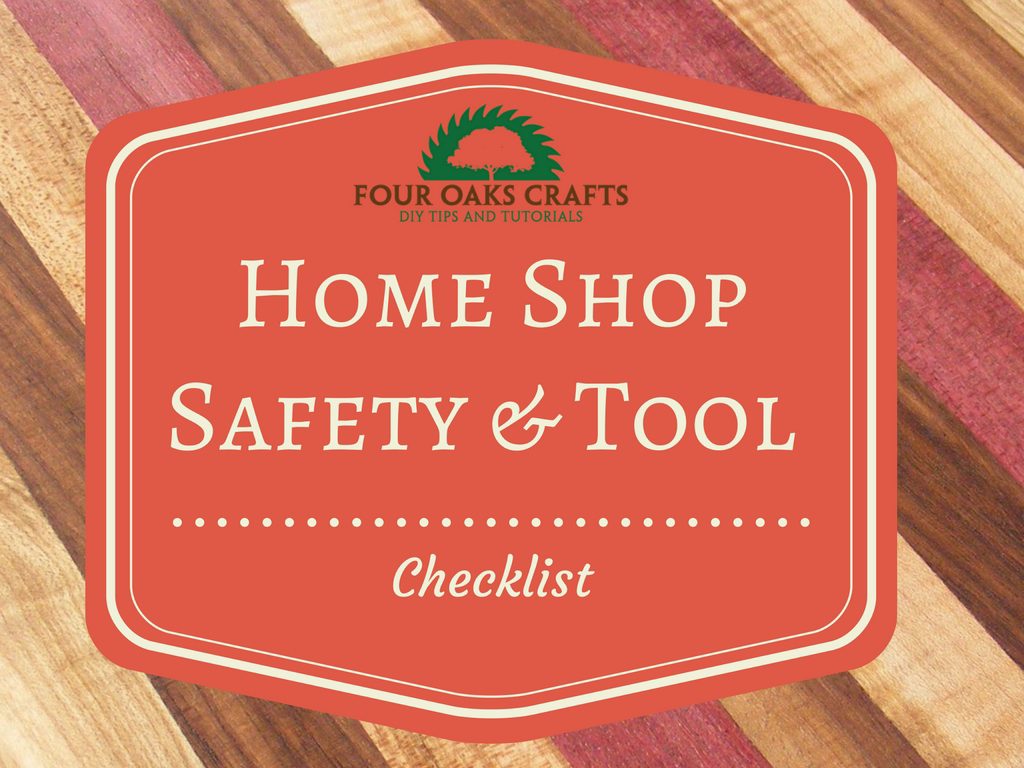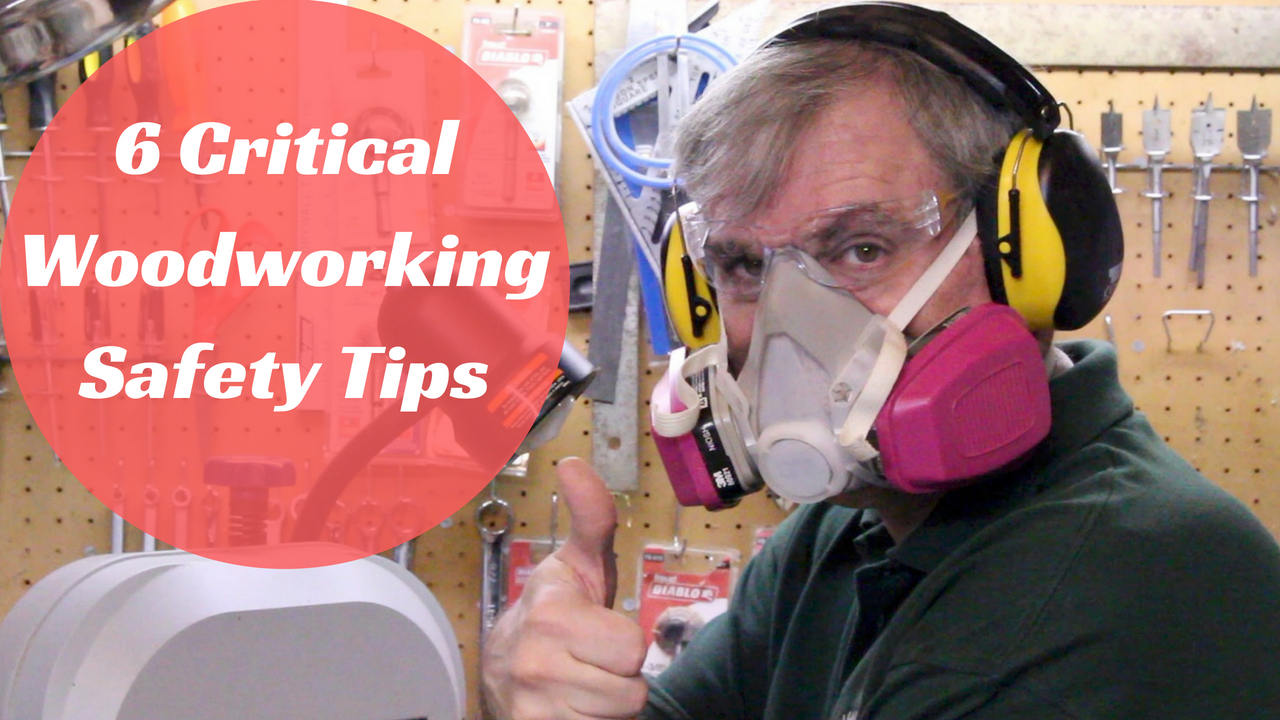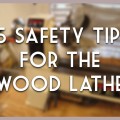As woodworkers, we want to leave the shop with ALL our fingers and BOTH eyes intact. In this article, I’m sharing 6 critical woodworking safety tips. These may sound like common sense to many of you, but it’s amazing how many folks will ignore simple principles that will save them pain.
There are many other tips out there on woodworking safety, but I believe these 6 set the foundation for all others.
Here are the tips:
1. Do a safety briefing with yourself.
No you’re not crazy to talk things over with yourself. Just take a minute and think about what you’re going to be building.
If you have woodworking plans, take a minute and read through the whole set of plans.
What tools are you going to use and what are the hazards you need to account for?
What techniques will you be using for a particular project?
Do you have your cell phone on hand if you have an emergency?
Is another person around you can call upon if you need assistance?
2. Wear the right PPE for the job.
You know the drill: safety glasses (ANSI approved), face shield, dust mask, ear plugs, protective gloves. You may not need all of these for every job, but don’t forget to use them when needed.
Some hazards can affect you short term. But things like dust or loud sounds could affect you long term.
PPE is your first layer of protection if something gets out of control. Suck up your pride and put these things on. You may have been a woodworker for 20+ years, but you never know when something is going to go wrong.
3. Know your skill level and limitations.
Don’t do anything you’re not comfortable doing. Get training if needed, and please read the instruction manuals that come with your tools. Make sure you follow the safety recommendations in those manuals.
Remember, there are always different ways to perform a woodworking task. If you’re more comfortable cutting something with a hand tool, go for it. Not everything has to be done with power tools.
There’s a wonderful woodworking community out there at your fingertips, so join a forum or Facebook group and ask questions. Don’t forget about local woodworking clubs you could join or visit.
Share your skills and safety tips with others in the community.
4. Keep your tools in good working order.
Inspect tool handles. Sharpen dull tools. Sharp tools are much safer than dull tools. Replace blades when needed. Again, your tool’s instruction manual should give recommendations if periodic maintenance is needed.
Use good tools. No, you don’t have to buy high-end tools, but don’t buy cheap, crappy stuff either.
Also, don’t make modifications to tools that might compromise your safety. So leave guards and other safety features in place.
Practice good housekeeping in your shop. Try to keep it clean and organized. Eliminate those trip hazards or potential fire hazards.
5. Maintain positive control of the workpiece and your tools.
Keep those hands and fingers away from blades or possible pinch points. Don’t let boards kick back on you or drag a finger / hand into the blade. Make sure your hands don’t slip into the blade. Use push sticks with your tablesaw. Use clamps when appropriate.
With your drill press, make sure the wood is secure so if that bit binds in the wood, you can minimize problems.
If you’re doing lathe work, ask yourself — should I be turning between centers? Or do I have a good chuck that will securely hold the piece I’m turning? I have another article on safe woodturning practices if you’re interested.
6. Keep a first aid kit and fire extinguisher handy.
If you’re careful, you should be able to recognize and control most hazards in your shop. But sometimes things are going to go south. Having an effective first aid kit is very important and might just save your life. Or an appendage.
Get familiar with you fire extinguisher and keep it in one place. Make sure it’s charged correctly. Fire extinguishers should be used to put out small blazes. If you have a large fire, it’s best to exit the location. Know your exit points.
I hope these 6 tips are helpful. Remember, you have to take care of your own wellbeing. Others are depending on you, so take care of yourself in the workshop. I can’t possibly cover everything is this one post. I do have a more comprehensive list of safety tips, if you’re interested. Check out the form below. If you join up, I’ll send you my Home Shop Safety and Tool Checklist for free. This list will step you through how to do an analysis of your shop and hopefully identify hazards and risks you might face.
Please take a minute and share any safety tips you think are helpful. See the comment field below.
Thanks, and happy woodworking!
Stephen

Are you starting up a new shop? Want to work safer in your shop? To help you answer these questions I've put together a 2-part checklist -- Home Shop Safety & Tool Checklist.
I will also send you updates of my latest woodworking and DIY projects. You can get all this by subscribing to my free email newsletter.







One of the best safety tips I have been given is to quit when you get tired. Otherwise, your attention will wander and you will make an error. Just hope that it isn’t one that causes bodily harm.
I agree. And I’ve often stopped when I get frustrated. Better to take a break and start fresh the next day. Thanks for the comment!